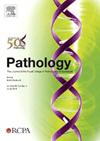Update on methods used for mycological testing: wide diversity and opportunities for improvement persist
IF 3.6
3区 医学
Q1 PATHOLOGY
引用次数: 0
Abstract
Past analysis of laboratory methods used for mycology specimens revealed significant variation in practices, many of which fell short of recommended procedures. In 2016 these findings led to a set of recommendations for laboratories to consider modification of their methods where appropriate, to analyse current laboratory methods used by participants in the Royal College of Pathologists of Australasia Quality Assurance Programs (RCPAQAP) Mycology module, and to compare these to the 2016 recommendations.
Seven test items, with 105–107 participants each, were analysed. Several laboratories (7–12%) did not handle specimens as recommended in an appropriate biological safety cabinet. Direct microscopy was not performed on tissue specimens 23–25% of the time. The most used staining method was potassium hydroxide with an optical brightener for fluorescent microscopy (49%) followed by Gram stain (33%). While 17–25% of laboratories used three or more media, use of four or more was uncommon (<3%). Between 9–13% of participants used only a single non-inhibitory medium for cultures. Urine specimens were incubated longer than recommended with 57% of laboratories incubating for >7days and 24% >21 days. Duration of incubation was shorter than recommended for several specimen types with 36% of skin specimens and 37–48% of tissue specimens being kept ≤21 days. For cultures kept >7 days, 13% were inspected daily, but for those incubating >14 days only 3%.
The methods of several laboratories remain outside recommended practice. An updated set of recommendations are made.
真菌学检测所用方法的最新情况:种类繁多,仍有改进机会。
过去对实验室处理真菌学标本的方法进行的分析表明,操作方法存在很大差异,其中许多方法都未达到推荐程序的要求。2016 年,这些研究结果提出了一系列建议,要求实验室考虑酌情修改其方法。我们对澳大拉西亚皇家病理学院质量保证计划(RCPAQAP)真菌学模块参与者目前使用的实验室方法进行了分析,并将这些方法与 2016 年的建议进行了比较。共分析了七个测试项目,每个项目有105-107名参与者参加。一些实验室(7-12%)没有按照建议在适当的生物安全柜中处理标本。23%-25%的实验室未对组织标本进行直接显微镜检查。最常用的染色方法是氢氧化钾加光学增白剂荧光显微镜(49%),其次是革兰氏染色法(33%)。有 17-25% 的实验室使用三种或更多培养基,但使用四种或更多培养基的情况并不常见(7 天和 24% >21 天)。几种标本的培养时间都比建议的时间短,36%的皮肤标本和 37-48% 的组织标本培养时间不足 21 天。对于保存时间超过 7 天的培养物,有 13% 的培养物需要每天进行检查,但对于保存时间超过 14 天的培养物,只有 3% 的培养物需要每天进行检查。一些实验室的方法仍不符合推荐做法。现提出一套最新建议。
本文章由计算机程序翻译,如有差异,请以英文原文为准。
求助全文
约1分钟内获得全文
求助全文
来源期刊

Pathology
医学-病理学
CiteScore
6.50
自引率
2.20%
发文量
459
审稿时长
54 days
期刊介绍:
Published by Elsevier from 2016
Pathology is the official journal of the Royal College of Pathologists of Australasia (RCPA). It is committed to publishing peer-reviewed, original articles related to the science of pathology in its broadest sense, including anatomical pathology, chemical pathology and biochemistry, cytopathology, experimental pathology, forensic pathology and morbid anatomy, genetics, haematology, immunology and immunopathology, microbiology and molecular pathology.
 求助内容:
求助内容: 应助结果提醒方式:
应助结果提醒方式:


